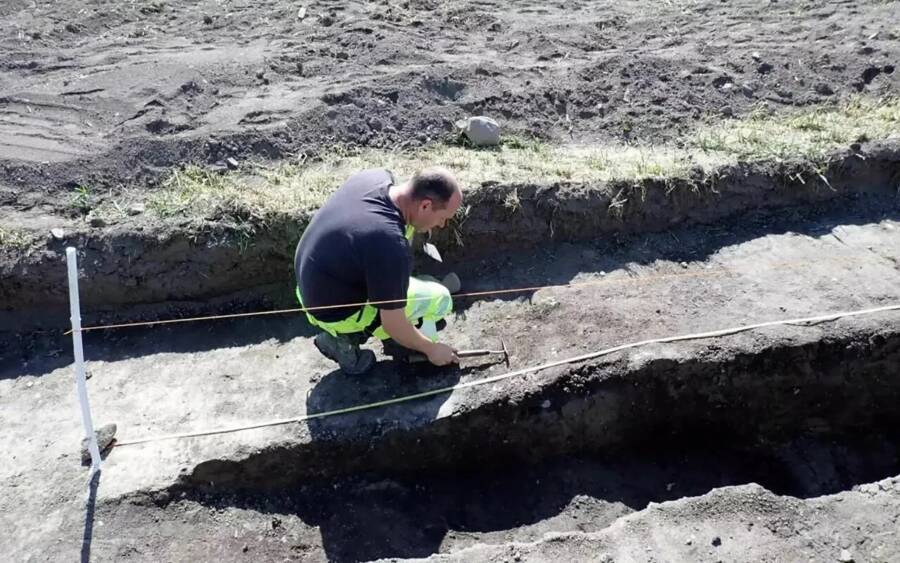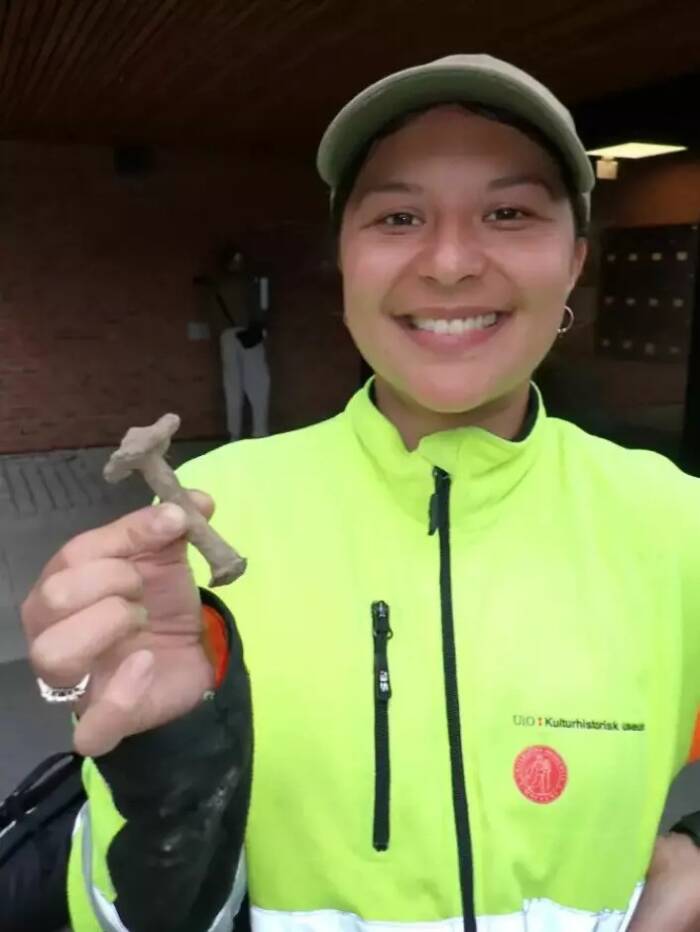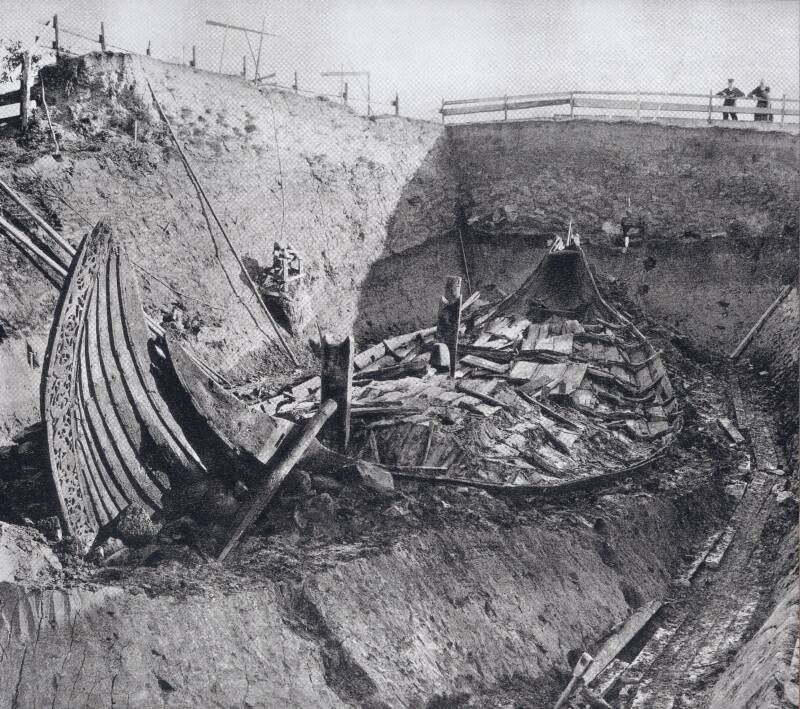Buried rivets alerted archaeologists to the presence of the ship, which may have been used in the burial of Viking king Bjørn Farmann.

Museum of Cultural History / University of OsloThe flat fields surrounding Jarlsberg Manor contain numerous boat burials.
In 2018, a metal detector survey started turning up rivets at Jarlsberg Manor, the historic seat of the Wedel-Jarlsberg family and the Count and Countess of Jarlsberg, who led the County of Jarlsberg. Archaeologists quickly realized that the metal detectors were finding hundreds — if not thousands — of rivets, suggesting that a Viking ship was buried there.
Ship burials are an important part of Viking funerary traditions, and archaeologists suspect that this site could contain the remains of a Viking king named Bjørn Farmann.
“Here Lie The Remains Of A Viking Ship”

Museum of Cultural History / University of OsloExcavation leader Christian Løchsen Rødsrud searching the site for traces of the Viking ship.
After the initial metal detector survey in 2018, archaeologists arrived to thoroughly investigate the site at Jarlsberg Manor. After two weeks of digging, they knew exactly what lay beneath the rolling green fields.
“We’ve found a place for a ship burial,” excavation leader Christian Løchsen Rødsrud told Science Norway. “We can now say for certain that yes, here lie the remains of a Viking ship. This discovery adds a new landmark to the map, once a significant site during the Viking Age.”
The archaeologists uncovered 70 rivets during their dig, but the metal detector pinged so often that they believe that the grounds contain hundreds, if not thousands, of rivets. These rivets would have been capable of holding together planks that were about an inch thick, which suggests that they were part of a large ship — a Viking ship.
“The size of the rivets indicate that it was a large ship,” Rødsrud explained. “[W]e’re talking about Viking ship size.”

Museum of Cultural History / University of OsloAn archaeologist holds up one of the dozens of rivets that they found at the site and which are large enough to suggest that they once held together a Viking ship.
A few of the rivets turned out to be horse crampons — spikes that are attached to horses’ hooves for navigating icy conditions — which are also indicative of Viking grave goods.
Though years of plowing have damaged the site, archaeologists suspect that it may have once been the ship grave of a Viking king.
The Burial Of A Viking King At Jarlsberg Manor?
Grand ship burials, in which a ship was used as a tomb, were practiced by ancient cultures around the world. Such burials have been discovered in Norway before, and archaeologists suspect that the rivets found at Jarlsberg Manor suggest a ship burial as well. They’ve theorized that it could have belonged to a Viking king named Bjørn Farmann.
According to Snorri’s sagas, Bjørn Farmann, the son of Harald Fairhair, was killed by his brother Eric Bloodaxe at the Sæheimr estate around 934 C.E. This is now the village of Sem, which is close to Jarlsberg Manor.

Public DomainA ship burial at Oseberg in Norway, which archaeologists believe is similar to the one at Jarlsberg.
In fact, archaeologists have long suspected that Jarlsberg Manor could contain a Viking ship burial like this one.
“It is not overly surprising that a Viking ship would have been buried at Jarlsberg, as the site is part of a rich cultural landscape with many burial grounds, indicating a place of importance,” Rødsrud told All That’s Interesting. “Excavations at several burial grounds in the near vicinity, have also revealed several smaller boat burials, probably relating to and encircling the ship burial site.”
He continued: “Being buried in a ship is a huge investment of labour, and a commodity that only a few could afford to take out of circulation and put into a grave monument. This means the deceased would have to be from the upper echelons of society, possibly a King or a Queen, or perhaps an Earl.”
At this point, archaeologists must decide if the site is worth exploring more.
“There are currently no specific plans for future excavations at the site,” Rødsrud remarked. “We have confirmed that the find is spread out in the topsoil layers of the field, and we will take our time considering what is the next and best way forward with this material in the future. As the find is already heavily disturbed by plowing, there is no immediate threat to the site, although continuous plowing will surely damage the rivet material and other grave goods further.”
Any future investigations, however, may be worthwhile if they could shed light on the life of a murdered Viking monarch.
After reading about the Viking ship burial in Norway, learn about Viking berserkers, fierce warriors who fought in a drug-induced, trance-like state. Then, discover the surprising truth about Viking helmets — and why they probably didn’t have horns.





